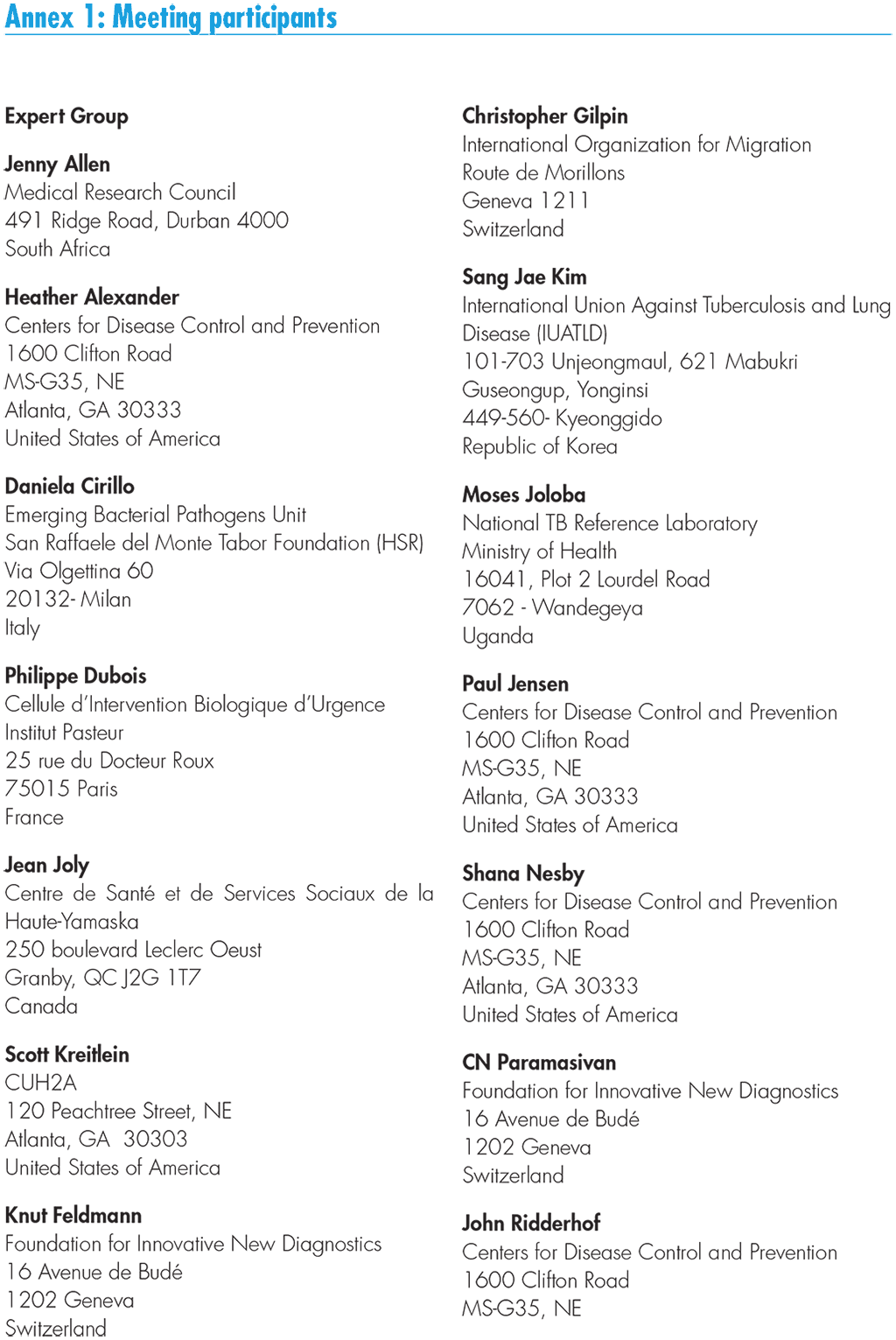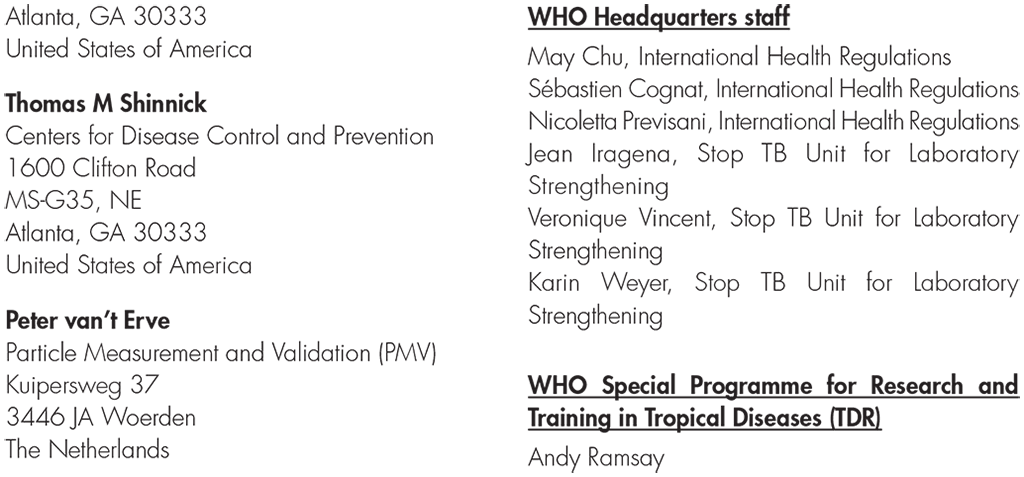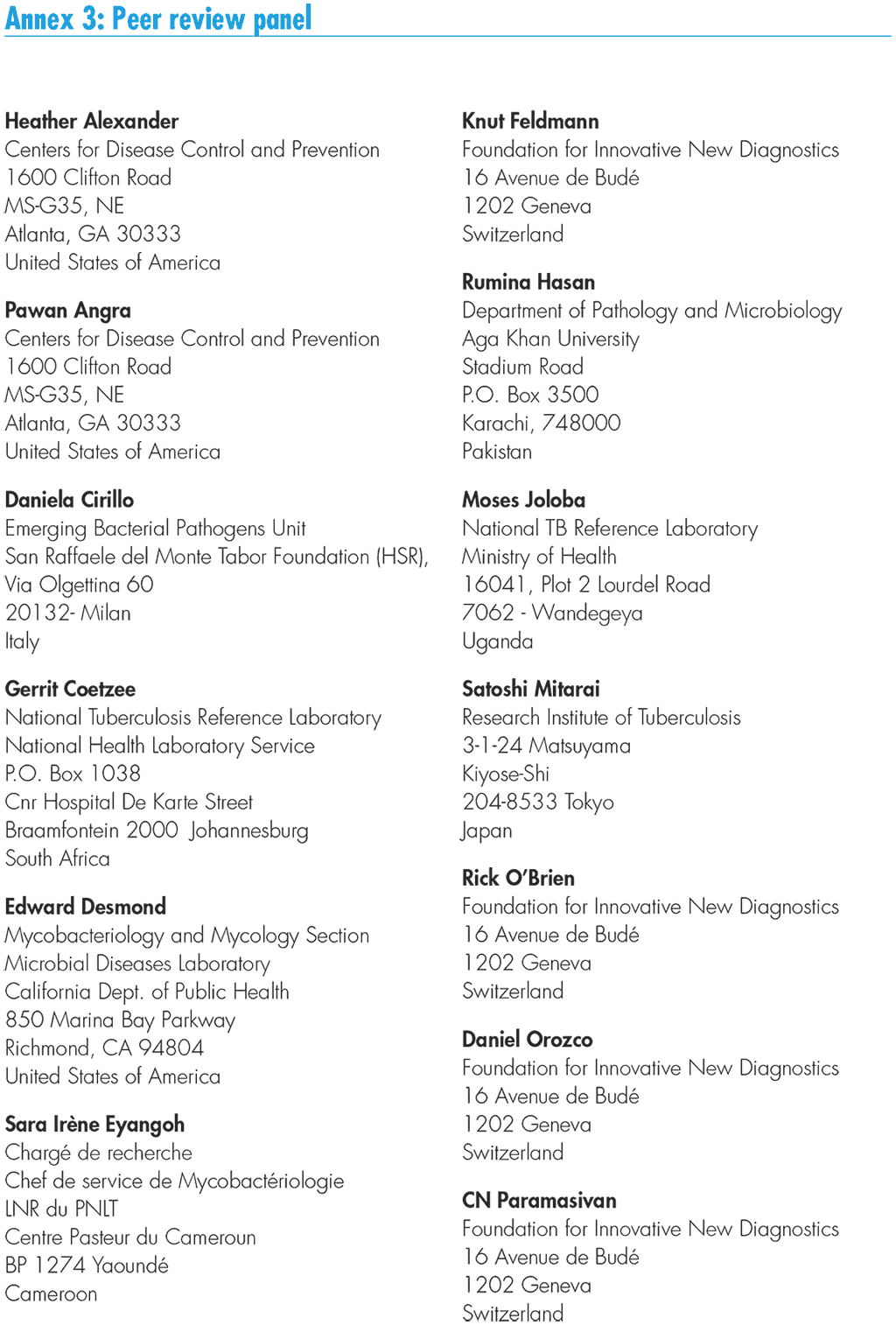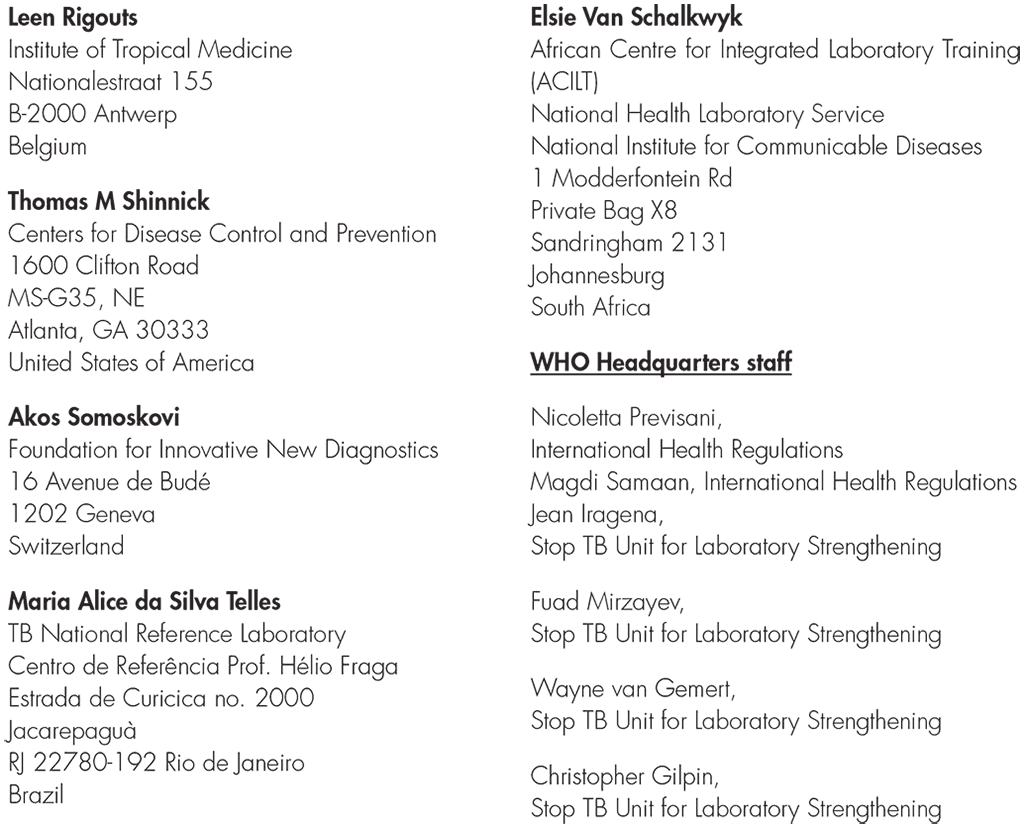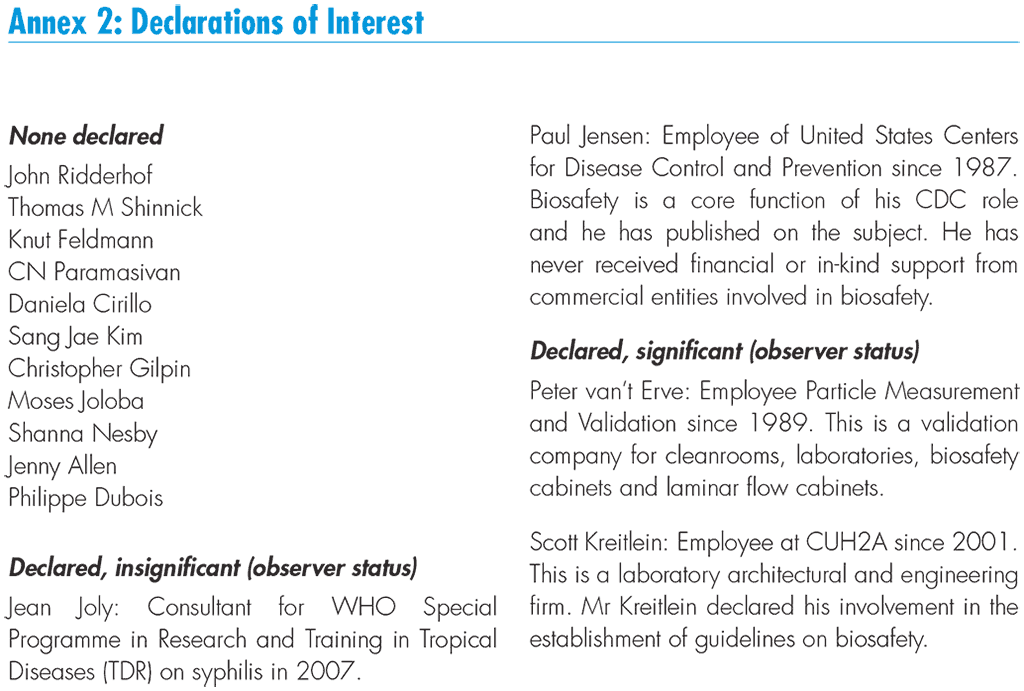1.1 Risk assessment for tb laboratories: what is it?
The four-tier classification system of biosafety levels (1–4) described in WHO’s Laboratory biosafety manual² provides broad guidance on basic concepts of biosafety for the development of national and international codes of practice. The challenge for managers of TB programmes and staff at laboratories, particularly in resource-limited settings, has been to interpret the generic risk-group assignments and biosafety levels into specific precautions relevant to a country’s activities.
 Feedback
Feedback
